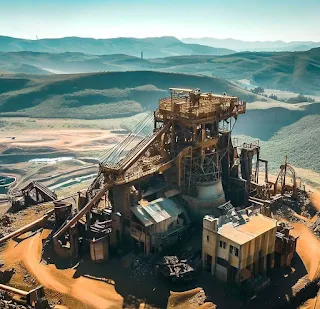Chinese Labor, Herbert Hoover, South African Gold Mines, and Boers
Herbert Hoover, the future 31st U.S. president, imported Chinese laborers for South African gold mines.
Revision: September 2025. This update refines sources and narrative on Herbert Hoover’s early mining work and its global impact.
Herbert Hoover and the Chinese Laborers of South Africa’s Gold Mines
Herbert Hoover, the future 31st U.S. president, played a surprising role in the recruitment of Chinese laborers for the gold mines of South Africa. This article revisits Hoover’s mining career and how it reshaped labor, politics, and his own reputation.
 |
| Witwatersrand gold mine in South Africa |
Before becoming America’s 31st president, Herbert Hoover was a young mining engineer in China. From 1899 to 1912, he worked for the Chinese Engineering and Mining Company (CEMC), helping transfer the Kaiping mines from Chinese control to foreign investors during the Boxer Uprising. As a director, Hoover helped organize the shipment of Chinese workers to the gold fields of South Africa, a little-known chapter in his life.
Gold and Labor on the Witwatersrand
The Witwatersrand goldfields, discovered in 1886, transformed Johannesburg into South Africa’s largest city. By the early 1900s, however, the mines lacked a steady, affordable workforce. African miners resisted harsh contracts; British and Boer settlers demanded higher wages. Mining magnates looked overseas for a solution.
Importing Chinese Workers
Between 1904 and 1910, more than 60,000 Chinese laborers arrived under indenture to work the gold mines. They faced segregation, long shifts, and racial abuse. Hoover’s CEMC helped recruit and transport them, treating the program as a profitable way to increase mine efficiency.
 |
| Herbert Hoover |
Backlash and Politics
The scheme provoked opposition on every side:
- African communities saw it as further exploitation of their labor and erosion of rights.
- Boers viewed imported workers as a cultural and economic threat.
- British miners feared wage competition and resisted working alongside the Chinese.
The controversy helped topple Britain’s Conservative government in 1906 and stirred South African nationalism and racism, setting the stage for the Union of South Africa in 1910.
Hoover’s Reputation
Hoover later tried to recast his mining years as humanitarian service, downplaying his role in the recruitment of Chinese workers. Yet, archival evidence shows that he regarded the labor program as a good business. This hidden past complicates the image of a president remembered mainly for his response to the Great Depression, revealing how global labor politics shaped his rise.


